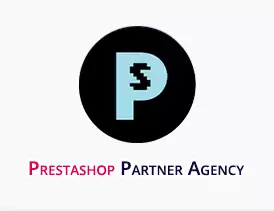How to Set Up Pre-Orders in PrestaShop
.jpg)
No doubt it’s very difficult to keep your customers waiting during the unavailability of the product. Yes, no stocks means no sales! Well, that’s not the case with pre-orders that let store owners make sales before they have inventory in stock, gauge demand for new products, and prevent customers from going somewhere else.
By default, Prestashop doesn’t offer convenient pre-order management. You may encounter overcomplicated stock settings, unclear back-office configurations, or lost opportunities through a lack of attention to the customer.
But, you can rely on the FME’s Pre-Order Module that offers availability message automation, displaying a private Preorder button, and processing payments directly in the backend. This interesting blog post looks into setting up Pre-orders in PrestaShop, so let’s get started.
Shortcomings of PrestaShop
PrestaShop has a series of strike-off functions for managing out-of-stock products, but it isn’t very good at parity for pre-orders.
By default, go to the /merchant module: Catalog → Products → Quantities. There, you can check the option “Allow orders when out of stock.” Go shopping and see.
This basically allows customers to “place an order” even if the product is not currently available. It may sound like a pre-order fix, but the platform isn’t designed for businesses promoting forthcoming products.
The disadvantages of this method include:
Poor Customer Communication: The official system doesn’t properly distinguish between in-stock orders and pre-orders. Customers might believe they are ordering off-the-shelf items and be frustrated when their shipments are delayed.
No Custom Preorder Button: The “PreOrder Now” or even “Coming Soon” button isn’t shown; instead, PrestaShop will still show the user an “Add Cart.” This is as confusing and trust-reducing.
Restricted Payment Options: You cannot have multiple payment options with PrestaShop for pre-orders. That means you can’t enable deposits or limit certain gateways, for instance.
Complex Inventory: Because the software handles pre-orders as backorders, there can be inventory report issues. This is making forecasting and stock replenishment decisions more difficult.
No Notification Workflow: Customers are not notified when a pre-ordered product is available, and therefore can be lost if you lack the attitude or ability to work with this.
PrestaShop’s built-in features won’t do the job for small stores that don’t need many orders, but if you want to take advantage of product launches, a dedicated Pre-Order Module is essential.
It closes the communication loop, automates workflows, and encourages customers to buy now. Don’t worry, you can override the basic Prestashop pre-order settings with the innovative module that you will come to know in the next section.
Pre-Order Module Installation
The setting of pre-orders in PrestaShop is simplified in a specific module. Here’s a step-by-step process of how you can install and configure it:
Step 1: Install the Module
Get the Pre-Order Module on PrestaShop Addons or from the FME Modules official website!
- In your PrestaShop back office, go to Modules → Module Manager.
- By clicking Upload a Module and choosing a module file.
- After uploading, select Install and click ok for installation.
Step 2: Turn on Pre-Orders for Items
After installing the module, navigate to catalog, then products and and click on the item that you want to make available for pre-order. Navigate to the Modules tab, find the Pre-Order configuration panel.
Toggle the Enable Pre-Orders option. Availability Date. Additionally, you should set an availability date to let customers know when the product will actually ship.
Step 3: Choose Your Preferences
Payment flexibility is one of the major advantages of the Pre-Order Module. You can allow your customers to:
- Fully pay for the pre-order beforehand to ensure revenue.
- Partially pay by depositing only 20% of the price now, and the remaining 80% nearer to the shipping date.
- Limit, or even disable, certain payment gateways, such as Cash on Delivery.
This way, you’re sure your customers are committed, but you avoid exposure to cash or fulfillment risks.
Step 4: Change What Appears
One of the fundamental flaws of native PrestaShop is the “Add to Cart” label. Use the module to change it to one of the following:
- Pre-Order Now
- Reserve Today
- Coming Soon, Secure Yours
This level of prior signaling significantly increases conversion rates, along with customer satisfaction with pre-orders you desire.
Step 5: Change Notifications
Notifications settings should be enabled to ensure customers are informed when:
- Pre-order has been confirmed.
- The product is ready to ship.
- Are there any alterations or postponements?
This setup saves you time and enhances user satisfaction. Use product banners or labels to make it clear to the customer that pre-orders are available.
Incorrect Stock Display
If the status is still “in stock” and not “pre-order,” please clear your PrestaShop cache (Advanced Parameters → Performance) and regenerate thumbnails.
Module Conflicts
Certain third-party extensions (e.g., cart or inventory advanced modules) overwrite pre-order logic. Before pushing the changes live, test in a staging environment.
Ensure to look into these things, and you’ll avoid any potential negative experience from customers as they pre-order your product, all the way from discovering it to checking out.
Take Away
Pre-orders aren’t just salesmanship; they’re a strategy for growth. By setting up pre-orders in PrestaShop using a special module, you can receive money before the release of the product, inform your customers about its launch, and avoid being left with goods without demand.
Although the original tools in PrestaShop are little more than a band-aid, this Pre-Order Module does everything from payments to notifications.


.jpg)
.jpg)
.jpg)
.jpg)
.jpg)
